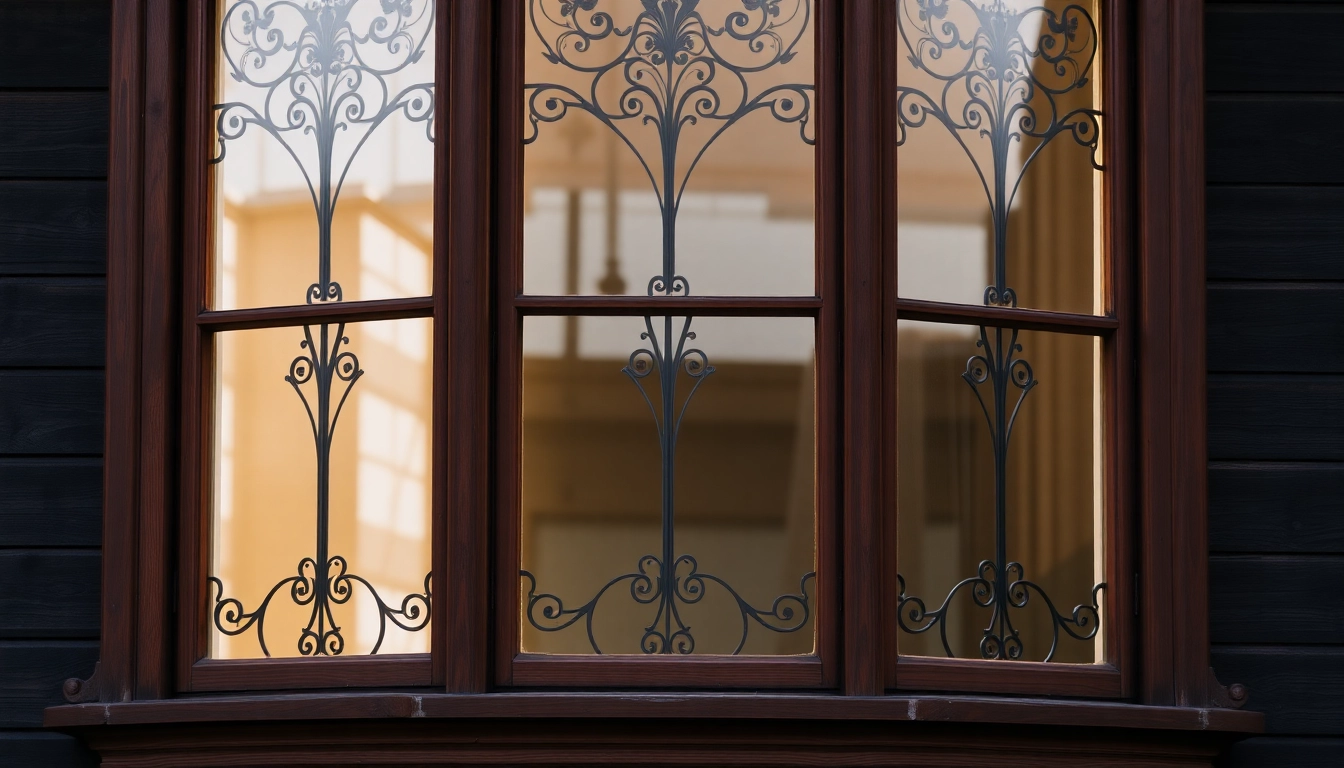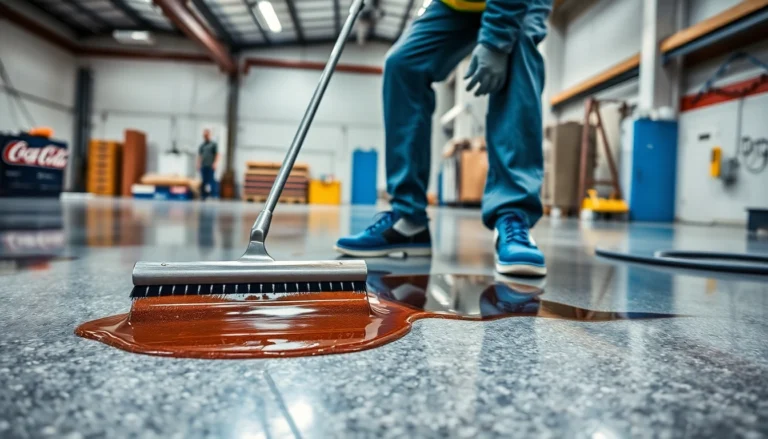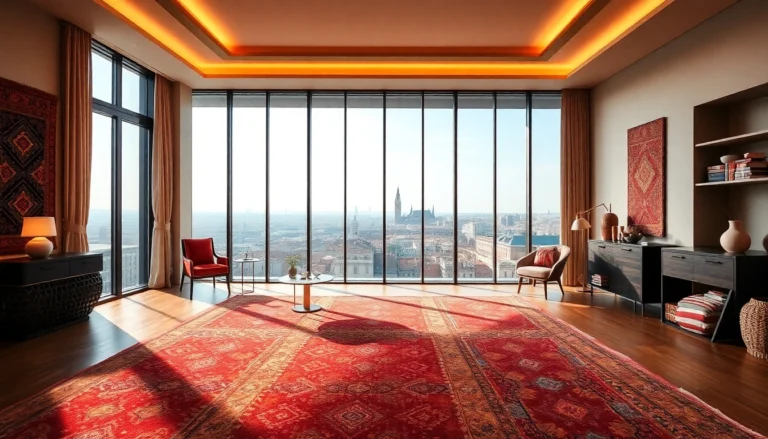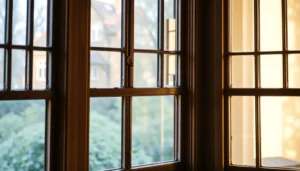Understanding Victorian Sash Windows: History and Characteristics
Victorian sash windows are iconic architectural features that define the charm and character of many historic and heritage properties throughout the United Kingdom. Their distinctive design reflects the technological advancements and aesthetic preferences of the Victorian era, which spanned from 1837 to 1901. These windows not only contribute significantly to the visual appeal of period homes but also embody a rich history of craftsmanship and innovation.
Victorian sash windows have become a symbol of elegance and nostalgia, often associated with the grandeur of Victorian architecture. Whether restoring a heritage building or incorporating Victorian elements into modern renovations, understanding their origins, features, and design principles is essential for making informed decisions about refurbishment, preservation, or replacement.
Origins and Evolution of Victorian Sash Designs
The development of Victorian sash windows is deeply rooted in the technological advances of the 19th century, particularly in glass manufacturing. During the early Victorian period, innovations such as larger sheets of improved glass allowed for more expansive window panes, facilitating the typical “two over two” sash configuration prevalent in this era. This design features two vertically sliding sashes, often with multiple smaller panes (or “lights”) separated by glazing bars, creating an intricate and elegant pattern.
The Victorian era also saw a transition from heavy timber frames to more refined, decorative, and functional designs that balanced aesthetics with durability. The windows evolved in response to increasing urbanization, with an emphasis on ventilation, lighting, and security, all of which influenced their broader size, ornate detailing, and structural intricacy.
Additionally, during this period, the use of different sash window styles mirrored societal shifts—larger sash windows catered to the desire for views and abundance of natural light, while decorative features such as sash horns, mid-rails, and ornamental glazing bars reflected burgeoning Victorian tastes for ornamentation. Over time, these windows became a hallmark of social status, with Victorian homeowners investing in craftsmanship that highlighted their wealth and sophistication.
Distinctive Features of Victorian Sash Windows
Victorian sash windows are characterized by several defining features:
- Large, Multi-Paned Glass Panels: The advent of better glass technology allowed Victorian sash windows to feature larger glass panes compared to earlier Georgian styles. Typically, Victorian sash windows have multiple small panes divided by glazing bars, often in a “two over two” or “six over six” pattern, depending on the building.
- Vertical Sliding Mechanism: The hallmark of sash windows, Victorian models operate with two movable sashes that slide vertically within a balanced frame. This design facilitates ventilation and ease of operation.
- Ornamental Detailing: Features such as sash horns (decorative timber fillets at the sash corners), profiles with thicker or more ornate mouldings, and applied beads emphasize the Victorian aesthetic.
- Use of Traditional Materials: Historically made from solid timber, Victorian sash windows showcase craftsmanship through detailed joinery, mortise and tenon joints, and bespoke hardware.
- Decorative Hardware: Sash lifts, locks, pulley systems, and sash cords (originally corded for operation) often feature intricate design, reflecting the period’s attention to detail.
Comparing Victorian and Other Period-Style Sash Windows
Victorian sash windows differ significantly from their Georgian and Edwardian counterparts, though they share common features of the sash design. Understanding these distinctions can aid in identifying, restoring, or replicating authentic period features.
Georgian vs. Victorian: Georgian sash windows, popular from roughly 1714 to 1830, tend to have smaller panes, with a focus on symmetry and proportion. Their designs often feature six-over-six or nine-over-nine grid patterns, with slender glazing bars and balanced, refined profiles. In contrast, Victorian sash windows favor larger panes, often with more ornate detailing. They tend to be more decorative, with prominent sash horns and thicker sash frames.
Edwardian vs. Victorian: Edwardian sash windows, from roughly 1901 to 1914, often retain the large, multi-pane structure seen in Victorian windows but lean towards simpler, cleaner profiles and less ornate detailing. They may feature sash horns but tend to be more subdued in ornamentation.
These differences are crucial when restoring or designing buildings to match historic authenticity. While Victorian sash windows evoke ornate craftsmanship and grandeur, Georgian styles emphasize restraint and symmetry, and Edwardian designs offer a transitional elegance.
Materials and Craftsmanship in Victorian Sash Windows
Traditional Timber vs. Modern uPVC Alternatives
The original Victorian sash windows were constructed from high-quality timber, chosen for its strength, workability, and natural insulating properties. Historically, local hardwoods such as oak, mahogany, or timber-specific to the region were used, often resulting in durable, long-lasting windows with a distinguished appearance.
Today, homeowners and restorers face a choice between authentic timber and modern uPVC (unplasticized polyvinyl chloride) alternatives. Genuine timber remains the preferred option for those seeking period accuracy, aesthetic authenticity, and a sustainable, breathable material that ages gracefully. Modern timber sash windows are crafted from responsibly sourced hardwoods or softwoods like oak, pine, or sapele, treated for weather resistance and durability.
Conversely, uPVC sash windows offer significant advantages in maintenance, energy efficiency, and cost. Contemporary uPVC versions can mimic the appearance of timber, with detailed profiles and finishes, while providing added benefits such as superior insulation, resistance to rot, and reduced upkeep. They are an increasingly popular choice for conservation projects where budget constraints exist without sacrificing visual authenticity.
Crafting Techniques that Preserve Authenticity
Skillful craftsmanship is essential in producing Victorian-style sash windows that uphold the period’s aesthetic and structural integrity. Traditional techniques involve mortise and tenon joints, finger-jointed components, and hand-finishing processes. Expert carpenters meticulously craft each window to match historic profiles, often referencing archival drawings or original matching windows.
Techniques such as sculpting timber profiles, applying decorative beads, and fitting period-appropriate hardware are critical in achieving an authentic look. For restoration projects, specialists often use hand tools and traditional joinery methods, preserving the original craftsmanship and ensuring long-term stability.
When selecting manufacturers or craftsmen, look for accreditation or certifications that demonstrate adherence to traditional methods. Some companies also offer bespoke options, allowing customers to specify fine details such as sash horn design, glazing bar pattern, and hardware finish to replicate authentic Victorian aesthetics precisely.
Customisation and Hardware Options for Authentic Look
True Victorian sash windows communicate their period through details like sash lifts, antiqued brass or wrought iron fixtures, and specific hardware configurations. Customisation options include choosing sash cord styles, pulley designs, and locks that match historical examples.
Modern reproductions often incorporate period-appropriate hardware, or users can retrofit authentic fittings to existing windows. Decorative sash horns—either fixed or removable—add to the period-perfect appearance, while double-glazing options can be incorporated discreetly without compromising aesthetics.
The hardware’s choice impacts not only appearance but also functionality and security. Flat-faced, cast-iron handles, sash locks with intricate detailing, and pulley covers evoke the Victorian era and can be sourced from specialist suppliers, enhancing authenticity and functionality simultaneously.
Benefits of Installing Victorian Sash Windows
Preserving Heritage and Boosting Property Value
Installing or restoring Victorian sash windows plays a vital role in maintaining the architectural integrity of heritage properties. These windows evoke the period’s design ethos, preserve character, and contribute to the historical value of the building. In conservation zones, strict planning regulations often mandate the use of period-appropriate windows for alterations or refurbishments.
Beyond aesthetic appeal, authentic Victorian sash windows can significantly uplift property value. Buyers of period homes and heritage buildings often seek original features or high-quality reproductions that retain aesthetic charm. Restoring or installing genuine sash windows is viewed as an investment in the property’s longevity and cultural significance.
Modern homeowners can combine period aesthetics with contemporary efficiency, making Victorian sash windows a practical choice for enhancing both historic charm and market appeal.
Energy Efficiency and Insulation Improvements
Historically, Victorian sash windows suffered from poor insulation, leading to heat loss and high energy bills. However, advances in double-glazing technology and sealed sash designs have mitigated these issues while preserving aesthetic integrity. Modern double-glazed sash windows feature tightly sealed units with inert gas fills that significantly improve thermal performance.
Timber sash windows can be upgraded with sash horn modifications to incorporate energy-efficient glazing without compromising authenticity. uPVC variants also naturally provide better insulation, reducing drafts and heat transfer. Additionally, draft-proofing strips and secondary glazing can be applied to existing sash windows, offering cost-effective upgrades that improve energy efficiency.
Proper installation and regular maintenance are essential to maximize insulation benefits. Employing specialist installers familiar with heritage standards ensures enhancements do not detract from the period appearance.
Enhanced Security and Soundproofing Features
Victorian sash windows historically provided limited security, but contemporary innovations have enhanced safety. Modern sash window designs incorporate multi-point locking systems, reinforced glazing, and secure hardware options to deter intruders. Additionally, the use of laminated glass and secondary glazing improves soundproofing, making homes more comfortable and private.
For period properties situated in noisy environments, installing secondary glazing behind the original sash window or upgrading to double-glazed units with acoustic features can dramatically reduce external noise infiltration.
When choosing Victorian sash windows, consider security features from the outset. Reputable manufacturers offer options like high-security locks, reinforced sashes, and discreet hardware, blending safety with period accuracy.
Expert Tips for Maintaining and Restoring Victorian Sash Windows
Routine Maintenance and Care Practices
Well-maintained Victorian sash windows can last for generations. Regular inspection, cleaning, and minor adjustments are key to preserving their function and appearance. Use soft brushes and non-abrasive detergents to clean timber and glazing surfaces, avoiding harsh chemicals that can damage finishes.
Lubrication of pulleys, sash cords, and lock mechanisms ensures smooth operation. Periodic repainting or staining maintains timber integrity and aesthetic appeal. Applying high-quality, breathable paints designed for historic properties prevents deterioration and maintains authenticity.
Addressing issues like rot, cracks, or sash cord wear immediately prevents more extensive damage. For minor repairs, DIY approaches may suffice, but major restoration tasks should be undertaken by experienced craftsmen familiar with period techniques.
Restoration vs. Replacement: Making the Right Choice
When dealing with aging or damaged Victorian sash windows, property owners face the choice between restoration and replacement. Restoration involves careful repair of existing frames, sash cords, hardware, and glazing, preserving as much original material as possible. This approach maintains the historic authenticity and can often be more cost-effective.
Replacement might become necessary if the original timber is beyond repair or if the window no longer provides acceptable energy efficiency or security. When replacing, it’s advisable to choose high-quality, period-accurate replicas or carefully restore existing windows to minimize impact on the building’s heritage.
Experts recommend a professional assessment to determine the most appropriate course of action, balancing conservation priorities with functional requirements.
Hiring Skilled Craftsmen for Authentic Results
Achieving authentic Victorian sash windows requires highly skilled craftsmanship. Look for specialists experienced in period restoration, with a portfolio of successful projects and references. Craftsmen should use traditional joinery methods, period-appropriate materials, and finishing techniques.
Proper installation is crucial: incorrect fitting can compromise performance, security, and aesthetics. Engaging qualified professionals ensures the windows meet both heritage standards and modern building regulations.
When selecting a contractor, verify their credentials, request detailed project plans, and examine examples of past work. Investment in expert craftsmanship enhances the longevity and period accuracy of your sash windows, ultimately safeguarding your heritage property’s value.
Buying Guide: How to Choose Quality Victorian Sash Windows
Key Factors to Consider Before Purchase
Choosing the right Victorian sash windows involves assessing several critical factors:
- Material Quality: Authentic timber or high-quality uPVC designed to replicate period features.
- Construction Technique: Craftsmanship, joinery details, and hardware details that reflect Victorian standards.
- Energy Efficiency: Double or secondary glazing options suitable for heritage properties.
- Hardware Authenticity: Period-appropriate locks, sash lifts, and pulley systems.
- Compliance and Certification: Adherence to conservation standards and building regulations.
- Vendor Reputation: Proven track record, reviews, and expertise in heritage windows.
Conduct thorough research, request samples, and consult with heritage or conservation specialists to ensure your investment aligns with your property’s needs and historical context.
Cost Expectations and Value for Investment
Victorian sash windows vary widely in cost depending on materials, size, hardware, and customisation. Traditional timber windows typically range from £1,000 to £3,000 per window, inclusive of installation, especially for bespoke or intricate designs. Features like double-glazing and period hardware add to the expense but significantly enhance performance and authenticity.
uPVC alternatives are generally more affordable, starting around £800 per window, and offer advantages in maintenance and insulation. However, when preserving heritage aesthetics, investing in high-quality timber or meticulously recreated designs provides the best return in terms of authenticity and long-term durability.
Ultimately, the value of Victorian sash windows extends beyond initial cost—consider their impact on property value, energy savings, and historic preservation.
Top Brands and Suppliers in the UK Market
Several reputable manufacturers and suppliers in the UK specialize in Victorian sash windows:
- Victorian Sash Windows Ltd: Experts in heritage and traditional timber sash windows, offering bespoke craftsmanship.
- Victorian Sliders® | ECOSlide®: Europe’s largest PVC-U sash window manufacturer, providing innovative, low-maintenance options.
- Parsons Joinery: A guide to Victorian window styles, emphasizing craftsmanship.
- Victorian Sash Window Company: Specialists in traditional and restoration sash windows, with a focus on quality materials and techniques.
When selecting a supplier, verify their experience in heritage projects, availability of customisation, and adherence to conservation standards. Consulting industry reviews and visiting showrooms can further aid in making an informed choice.


















